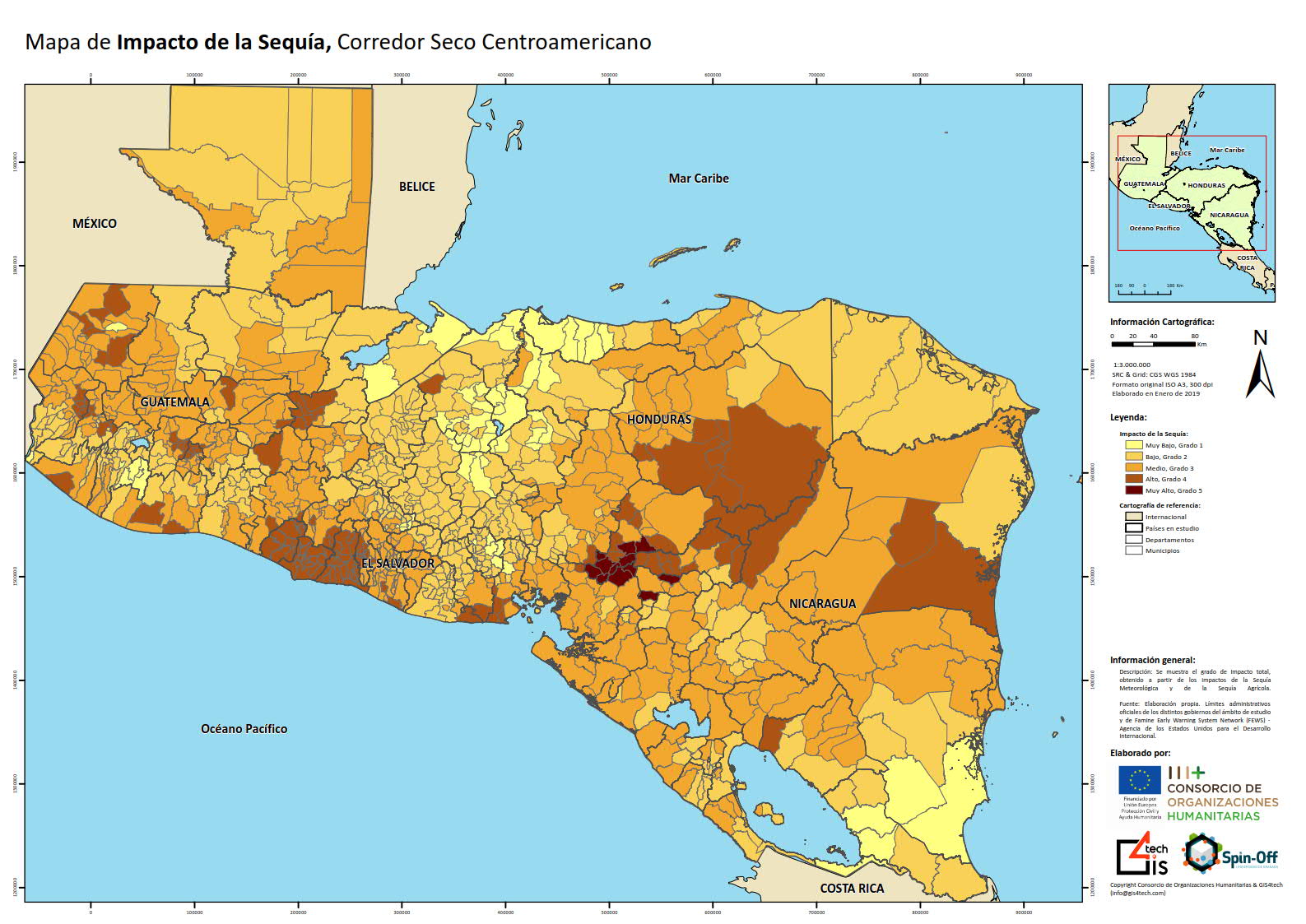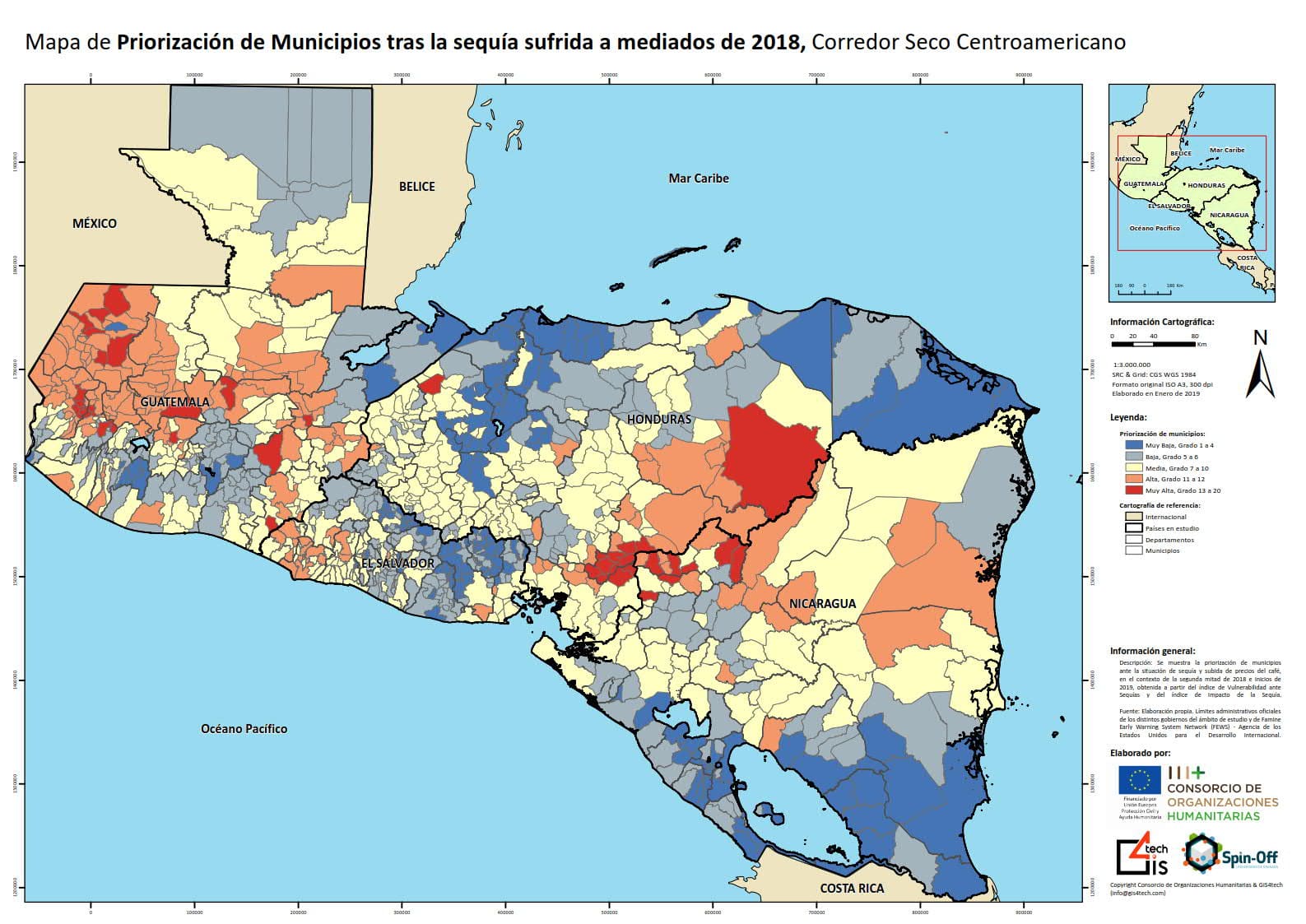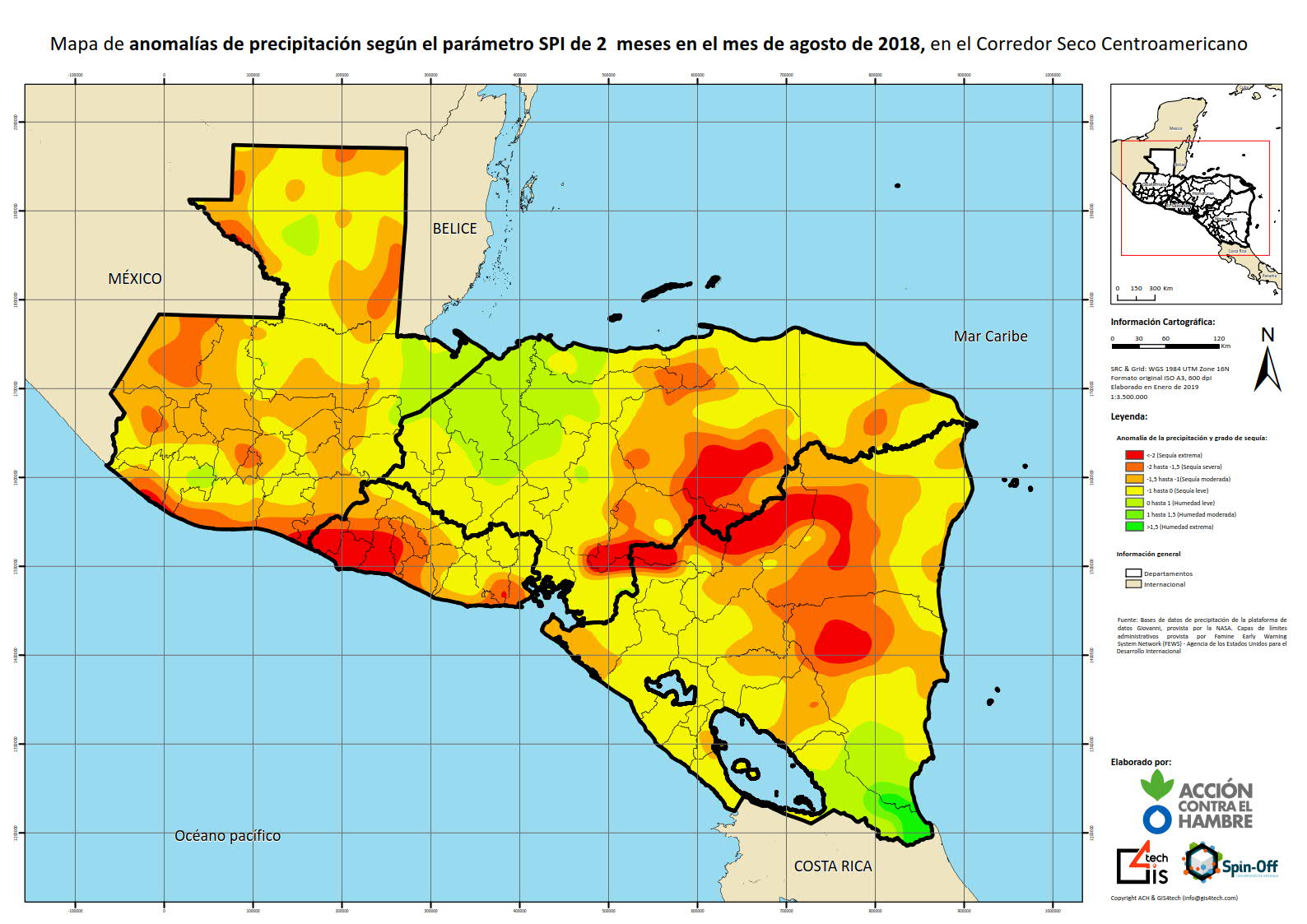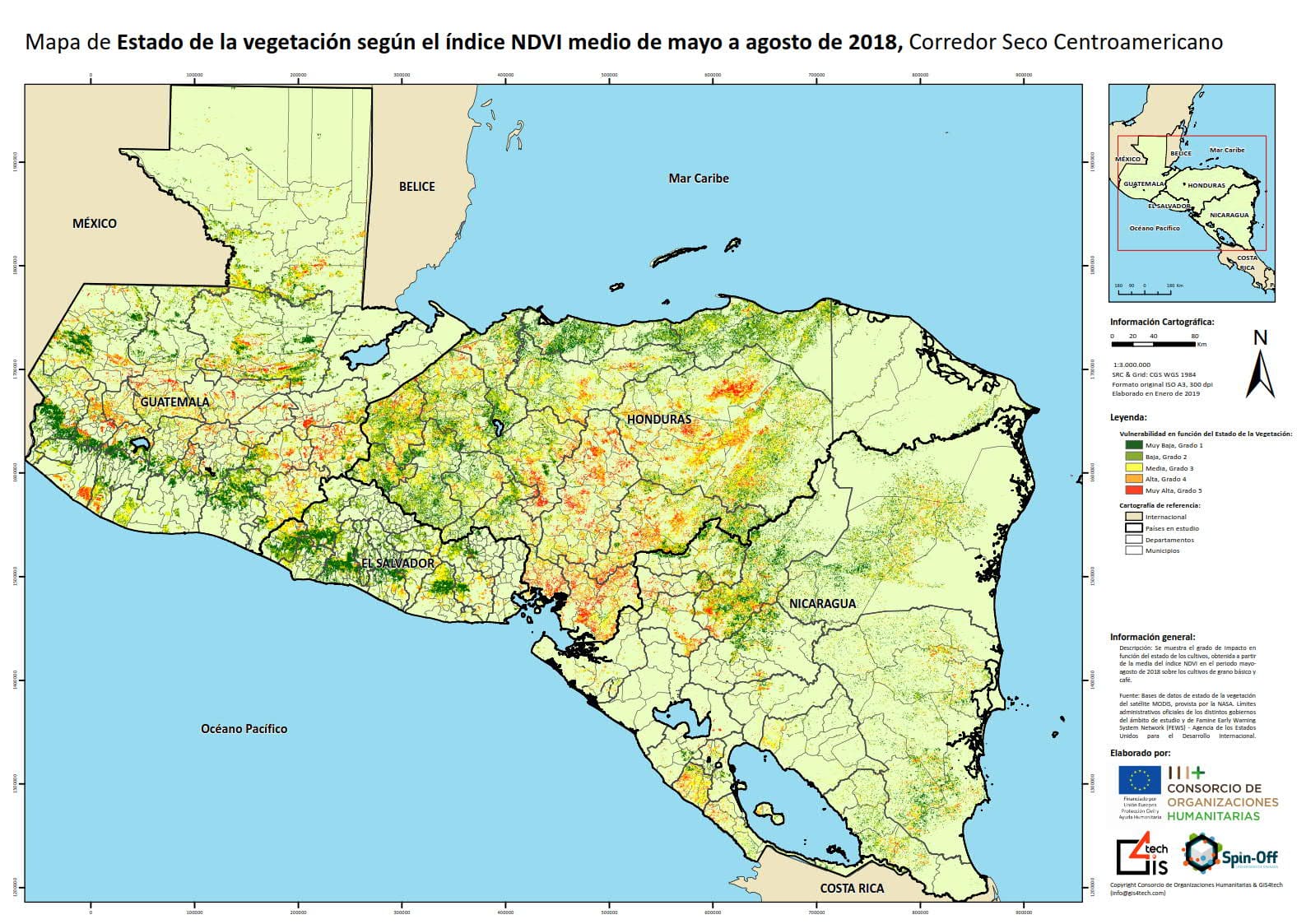The months of July and August are characterised by a usual decrease in rainfall accumulations in Central America, this phenomenon is known as canícula. In Central America, the canícula usually occurs from 10 to 20 July and from 5 to 15 August. However, in 2018 the canícula began in the last week of June, continued in July, and lasted until the first half of August, especially in the eastern region and the central plateau. This situation affects Central American countries, including Guatemala, Honduras and Nicaragua, and their communities with varying degrees of intensity.
Consequently The overall objective of the consultancy is to identify the Central American municipalities where a higher rainfall deficit during the first planting of staple grains in 2018 overlaps with a higher incidence of poverty, migration, chronic malnutrition and food insecurity to assist decision-making.

Drought impact map of the Central American Dry Corridor

Map of prioritisation of municipalities after the drought in mid-2018 in the Central American Dry Corridor
Specifically, these were the activities carried out:

Precipitation anomaly map (SPI) for 2 months in August 2018 in the Central American Dry Corridor

Average vegetation condition map (NDVI) May to August 2018 in the Central American Dry Corridor
Correo electrónico: info@gis4tech.com
